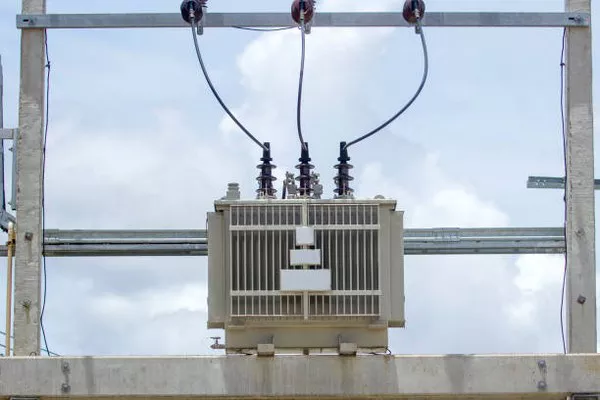Current transformers (CTs) are indispensable devices in the field of electrical engineering and power systems. These precision instruments play a crucial role in measuring electrical current accurately, ensuring the safety of equipment and personnel, and enabling efficient power management. In this article, we will delve into the inner workings of current transformers, exploring their principles, applications, and importance in various industries.
The Basics of Current Transformers
A current transformer, often abbreviated as CT, is a type of instrument transformer designed to transform high-current circuits into a more manageable, measurable, and safe current suitable for monitoring and control purposes. These transformers are employed extensively in power systems, industrial processes, and electrical equipment to ensure the safe operation of electrical circuits.
Principle of Operation
CTs operate based on the fundamental principles of electromagnetic induction. The core component of a current transformer is a magnetic core, typically made of iron or a magnetic alloy. This core surrounds the conductor through which the current to be measured flows. When current flows through the primary winding (the conductor), it generates a magnetic field that induces a voltage in the secondary winding (coiled around the core). The secondary winding is connected to the measuring instruments or protection devices.
Turns Ratio
The turns ratio of a CT refers to the ratio of the number of turns in the primary winding (Np) to the number of turns in the secondary winding (Ns). It is a critical parameter that determines the transformation ratio and is typically specified on the CT’s nameplate. The turns ratio defines how much the primary current is reduced before being delivered to the secondary winding. For example, a CT with a turns ratio of 1000:1 will reduce a primary current of 1000 amperes to 1 ampere on the secondary side.
Accuracy Class
CTs are available in different accuracy classes, such as 0.1, 0.2, 0.5, 1, and 3. These classes indicate the precision with which the CT transforms the primary current into the secondary current. A lower accuracy class signifies higher accuracy. For critical applications like protection relays and revenue metering, CTs with higher accuracy classes are used to ensure precise measurements.
Types of Current Transformers
There are several types of current transformers, each tailored to specific applications:
Bar-type CTs: These are commonly used for measuring current in busbars and large conductors. Bar-type CTs consist of a split-core that clamps around the conductor without the need for disconnecting it.
Wound CTs: These are characterized by a wound primary winding and are used in applications where high accuracy is required. They are often used in laboratory settings and precision measuring equipment.
Window-type CTs: These CTs have a toroidal (doughnut-shaped) core with an opening (window) where the conductor passes through. They are versatile and widely used in power systems for various applications.
Applications of Current Transformers
Current transformers find application in a wide range of industries and systems, including:
Power Systems: CTs are a fundamental component of power systems, where they are used for current measurement, protection, and control. They play a critical role in the operation of circuit breakers, relays, and protective devices, ensuring that fault currents are detected and managed promptly.
Energy Metering: In utility companies and industrial facilities, CTs are used in combination with voltage transformers (VTs) to measure energy consumption accurately for billing and monitoring purposes. These CTs are typically high-accuracy class instruments.
Motor Protection: CTs are used to monitor the current in motors and protect them from overcurrent conditions. In case of excessive current, the protection system can trip the motor to prevent damage.
Ground Fault Protection: Ground fault current transformers are designed to detect and measure ground faults in electrical systems. They are essential for protecting personnel and equipment from electric shock hazards.
Monitoring and Control: CTs provide valuable data for monitoring and controlling electrical systems. They are used in combination with protective relays and meters to maintain system stability and optimize energy usage.
Importance of Accurate Current Measurement
Accurate current measurement is crucial in various aspects of electrical engineering and power systems. Here’s why CTs are indispensable for these applications:
Safety: In power systems, accurate current measurement is essential for detecting abnormal conditions, such as short circuits and overloads, which can pose serious safety risks. CTs help trigger protective devices to isolate faulty circuits quickly.
Equipment Protection: CTs play a vital role in protecting expensive electrical equipment, such as transformers, generators, and motors, by ensuring that they operate within their designed current limits.
Energy Management: In industrial and commercial settings, precise current measurement is essential for optimizing energy usage, identifying areas of inefficiency, and reducing operating costs.
Billing and Revenue: Utility companies rely on CTs to measure the energy consumed by their customers accurately. Billing errors can have significant financial implications, making the accuracy of CTs critical.
Conclusion
Current transformers are indispensable devices in the world of electrical engineering and power systems. Their ability to accurately transform high currents into manageable levels ensures the safety of equipment and personnel while facilitating precise measurement and control of electrical systems. Whether it’s for protecting circuits, monitoring energy usage, or billing purposes, current transformers play a vital role in ensuring the reliability and efficiency of electrical systems across various industries. Understanding their principles and applications is essential for engineers and professionals working in the field of electrical engineering and power distribution.

